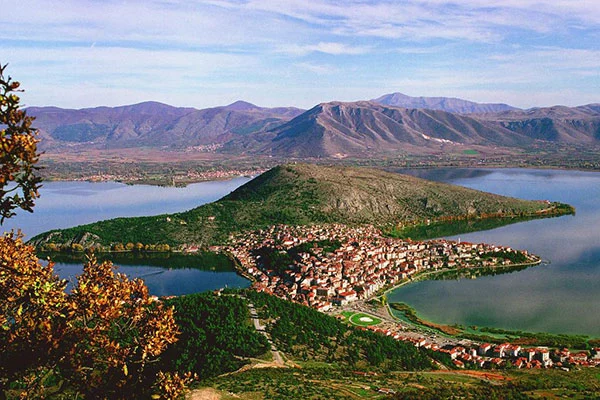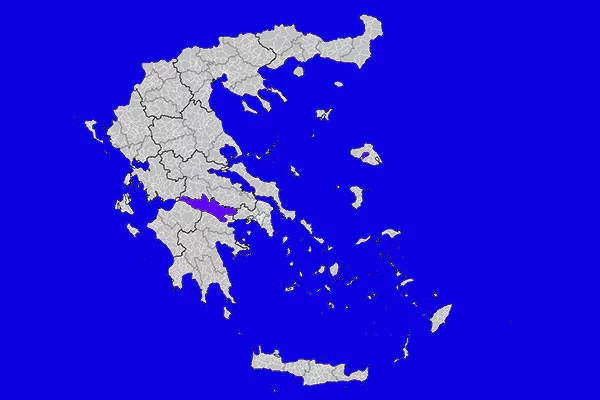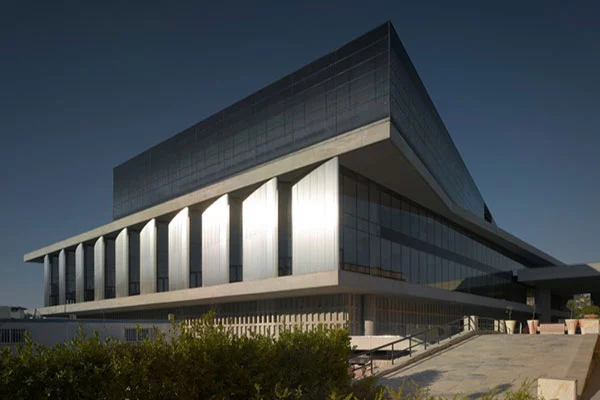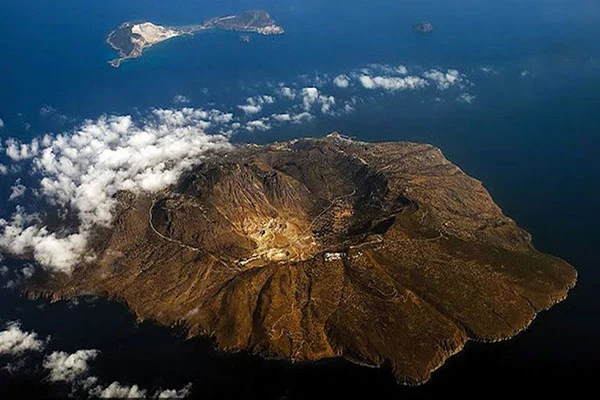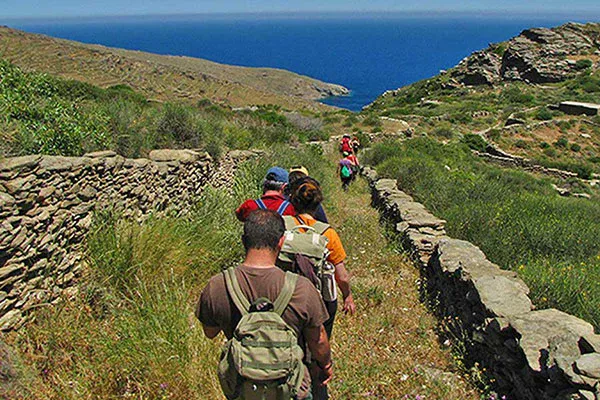
Monastery of Great Lavra
The monastery of Great Lavra was the first monastery built on Mount Athos. It was founded in 963 by Saint Athanasius the Athonite with the financial support of the emperors in Constantinople including Nikephorus Phocas and Ioannis Tsimiskes. The monastery is located on the southeastern foot of the Mount at an elevation of 40 meters (43 yd) and is ranked first in the hierarchical order of the Mount Athos monasteries. The arsanas (port) of the Monastery is located about 20 minutes away. Its founding marks the beginning of the organized monastic life at Mount Athos. At the location of the monastery, there was one of the ancient cities of the Athos peninsula, perhaps Akrothooi. The history of Great Lavra is the most complete compared to the history of the other monasteries, because its historical archives were preserved almost intact. The archives of Lavra are also a precious resource for the Byzantinist, since they contain 172 acts dating before 1453.
The Holy Monastery of Great Lavra was built in the form of a small fortress. The building project began with the protective walls and continued to the church and cells. In addition, comprises a holy well, dining room, kitchen, oil repository, relic storage, vestry, sanitarium and library. During the 11th century there were 700 monks but in the 14th century the monastery suffered, like all the other monasteries on Mount Athos from pirate raids. The result of the crisis was the formation of a peculiar way of monasticism, the idiorhythmic way. There were some attempts to help the monastery operate again under cenobitic monasticism but without result. Finally, the monastery became again cenobitic in 1980.
There are 37 chapels associated with the Lavra monastery, located both within and outside the fortress walls. The central church (katholikon) is a domed four-column church that was modified over time to a more cruciform shape. In 1535, the Katholikon was decorated with frescoes made by the great Cretan painter Theophanes Strelitsa. Besides the Katholikon, Theofanis Strelitsas and his 2 sons also decorated the dining hall, and part of the oil repository and the kitchen. The narthex was painted in 1954. The katholikon was built in 962/3 and was initially dedicated to the Annunciation of the Blessed Virgin Mary, but was re-dedicated to St. Athanasius in the 15th century. His tomb is located in the chapel of the Forty Martyrs, next to the narthex of the Katholikon. The architectural style of the church became an architectural standard and was copied by all the other monasteries on Mount Athos.
Among the many priceless treasures of the Monastery is the icon of Our Lady Koukouzelissa, patriarchal and imperial dalmatics, and sacred relics. The library of the Lavra contains some 2.116 Greek manuscripts and 165 codices. There are also 20.000 printed books and about 100 manuscripts in other languages. The collection is the richest collection among all monasteries at Mount Athos. The three famous Sketes of St John the Baptist, St Anne (Agia Anna), and Kafsakalyvia, a large group of cells and some ascetics' retreats, are all possessions of the Lavra. Today there are some 50 monks living in the Monastery and around 300 in its dependencies. The monastery remains open throughout the year from sunrise until sunset.
Each day, 100 Orthodox and 10 non-Orthodox male pilgrims are admitted for a three-night stay in one of the peninsula's 20 monasteries. Clergy and those who have a special invitation from the monasteries are excluded. Because of the small number of non-orthodox permits issued, if you are planning to visit Mount Athos you should run the necessary procedures the earliest possible. Women are not allowed to enter Mount Athos by law, and there is a penalty of 12 months’ imprisonment for those who break it. Boys were not allowed in the past, but the policy has become more flexible over the years, and now boys can come if they're accompanied by an adult - usually their father.
To enter Mount Athos a permit is required for both individuals and groups. The permit is issued by the Ministry of Foreign Affairs, Directorate of Churches or by the Ministry of Northern Greece. Orthodox Greeks can apply by producing their identity card at the Athos Bureau in Ouranoupolis on the right side of the port. Diamonitiria (permits to stay as a pilgrim) are issued by the offices of the Athos Bureau, at Ouranoupolis. In order to get their diamonitirion visitors must show their identity cards and pay the sum of €25 for Orthodox visitors, €35 for non-Orthodox visitors or €18 for students. Foreign visitors also need a passport; if you are Orthodox but not Greek, you will need to prove this with a letter from a priest or a baptismal certificate. Foreigners can send an e-mail to athosreservation@gmail.com a photocopy of the request along with their passport. Once you have secured your accommodation, you will need to contact the monastery that you wish by sending a letter to the guest request.
Once in Agio Oros, you can travel around. The hospitality at the monasteries is provided free of charge. Bed and board are offered to the holders of the permit. If you are planning to visit Mount Athos you should bring with you long sleeved shirts, long trousers, flashlight, athletic shoes and a flashlight. Bear in mind that the monastery doors close by sunset. Mobile phones and photo cameras are allowed, but DO NOT photograph the monks. Video cameras are not allowed. Swimming in the sea or listening to loud music is not allowed either. Follow the ritual during lunch and dinner. Everyone, visitors and monks enter the dining room and stand upright in front of their seat. The Abbot prays, gives his blessing, a bell sounds, and everyone sits down to eat without talking to each other. A monk reads ecclesiastic texts and in about 20 minutes the bell sounds for the second time. If you have or you have not finished eating, you must get up, the abbot prays and after he finish you can get out of the dining room.
The Mount Athos Pilgrims’ Bureau- Athos
Official Office
109 Egnatia str,
54635 Thessaloniki
Tel. for nationals +302310252575 Tel. for foreigners +302310252578 Fax +302310222424
Thessaloniki office hours: Monday-Friday 09:00 – 14:00, Saturday: 10:00 – 12:00


